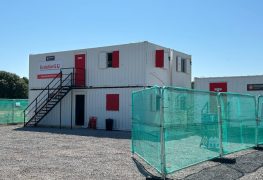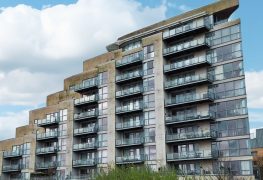Cladding remediation are some of the most complex construction projects. They require a specialist approach due to stringent regulations, fire safety considerations, and unforeseen site conditions. Accurately estimating cladding remediation costs is particularly challenging due to hidden defects uncovered during remediation, evolving government funding requirements, and the need for specialist contractors and materials.
Whether you’re a landlord, architect, or property management firm, navigating these complexities requires expert support. At Evolution5, we provide specialist consultancy services to help clients proactively manage risks and develop accurate, data-driven cost plans to ensure successful project delivery.
Why Cladding Remediation Cost Estimation is Different
Unlike standard construction projects, cladding remediation is a high-stakes process bound by strict regulations, evolving safety standards, and intense public scrutiny. Getting it right is critical for ensuring your building is safe and compliant. Without specialist expertise, accurately estimating cladding remediation costs can be a real challenge.
With government funding criteria constantly changing and the risk of unexpected costs cropping up mid-project, expert guidance is essential from the start. At Evolution5, we help landlords, developers, and property managers navigate these challenges, ensuring cost certainty and compliance at every stage. Here, we explore the cost estimation challenges in more detail:
1. Regulatory and Compliance Challenges
The Building Safety Act 2022 introduced new obligations for building owners and developers, particularly around leaseholder protection and safety standards. While these changes are essential for improving safety, they also have a direct and often unpredictable impact on project costs. Here’s how:
- Specialist Materials and Installation Requirements: New compliance standards often require the use of specific fire-rated materials, which can be significantly more expensive than standard alternatives. Additionally, these materials may require specialist installation techniques, increasing both labour costs and project timelines.
- Increased Oversight and Certification: Stricter regulations mean more frequent inspections, quality assurance checks, and third-party certifications. These additional compliance steps add administrative costs and can delay progress if approvals aren’t secured promptly.
- Liability and Risk Management: Falling short of compliance can lead to financial penalties or legal action. Seeking expert advice early in the process helps mitigate these risks and avoids the need for costly alterations later.
- Government Funding and Eligibility Complexities: Many cladding remediation projects rely on government grants or funding schemes, but the eligibility criteria are complex and frequently updated. If your project doesn’t meet the latest criteria, funding may be withdrawn, leaving you to cover unexpected costs.
2. Unforeseen Building Conditions and Hidden Defects
Even with thorough pre-construction surveys, unexpected issues can arise once remediation work begins. These hidden defects can significantly impact cladding remediation costs. Common challenges include:
- Deterioration of structural components behind cladding
- Deficiencies in fire-stopping and compartmentation
- Variations in construction methods across different sections of the building
To mitigate these risks, Evolution5 employs advanced investigative techniques such as drone surveys, abseil inspections, and core sampling to build a more accurate cost forecast.
3. Procurement and Supply Chain Uncertainties
The procurement process for cladding remediation differs from standard construction projects due to the need for specialist contractors and materials that meet fire safety standards. Challenges include:
- Fluctuations in material costs, particularly for compliant fire-resistant cladding
- Limited availability of skilled contractors with relevant experience
- Extended lead times for critical materials and components
Our team ensures that procurement strategies incorporate risk allowances and contingency planning to prevent delays and budget overruns.
4. Site Constraints and Logistical Challenges
Many cladding remediation projects take place in high-density urban environments, making access and logistics particularly challenging. Cladding Remediation Cost estimations must account for:
- Road closures and pavement licences for scaffolding installation
- Safe working access, particularly for high-rise buildings
- Minimising disruption to residents while maintaining project efficiency.
Our team has successfully managed projects requiring creative solutions, such as transporting materials via river barges in Bristol and negotiating access agreements with adjacent property owners.
How Evolution5 Ensures Accurate Cost Estimation
At Evolution5, we leverage our extensive experience in cladding remediation to provide detailed, accurate cost estimates that reflect the unique challenges of each project. Our approach includes:
- Comprehensive risk assessments to anticipate and mitigate unforeseen costs
- Phased cost planning, ensuring flexibility as project conditions evolve
- Collaborative procurement strategies, balancing cost efficiency with compliance
- Transparent reporting, keeping you informed and in control of budgets
Evolution5 works closely with legal advisors and financial consultants to ensure that all cost elements are correctly accounted for.
Read more about our Cladding Remediation Services.
Remove the Uncertainty Out of Cladding Remediation
Whether you’re applying for government funding, working with developers, or planning a remediation strategy, our expertise ensures your project remains compliant, cost-effective, and on schedule.
At Evolution5, we have a proven track record of providing clear, actionable guidance and reliable cost certainty for your cladding remediation projects. From identifying compliant, fire-safe materials to coordinating trusted contractors, we’re here to make your project a success.
Talk to our expert team today on 023 8040 5073 to find out how we can support your project with confidence, clarity, and complete professionalism.
Why is Cladding Remediation Cost Estimation Different?
Cladding Remediation cost estimation is more complex than standard construction projects because it involves specialist materials, unique installation requirements, and the need to comply with evolving safety regulations.
What regulatory requirements affect Cladding Remediation projects?
The Building Safety Act 2022 introduced new obligations for building owners and developers, particularly around leaseholder protection and safety standards. This affects Cladding remediation projects in terms of Specialist Materials and Installation Requirements, more frequent inspections, quality assurance checks, additional design liability and risk management.
What are some of the Procurement and Supply Chain challenges with Cladding Remediation projects?
Cladding remediation projects face several procurement and supply chain challenges due to the need for specialist contractors and compliant fire-resistant materials. Key issues include:
- Rising and unpredictable material costs, especially for approved cladding systems
- Limited availability of skilled contractors with the necessary experience in cladding remediation
- Long lead times for sourcing critical materials and components, which can delay project timelines
To manage these challenges, it’s essential to have a robust procurement strategy in place. At Evolution5, we incorporate risk allowances and contingency planning to help clients avoid delays, stay on budget, and maintain compliance throughout the project.
What are the site constraints and logistical challenges in cladding remediation projects?
Many cladding remediation projects are carried out in high-density urban areas, where space is tight, and access is limited. This creates a few logistical and cost-related challenges that must be factored into project planning.
Key logistical challenges include:
- Road closures and pavement licences for scaffolding and access equipment
- Restricted access, especially for high-rise buildings requiring specialist working platforms
- Maintaining resident safety and minimising disruption during ongoing works





